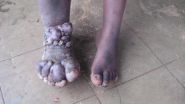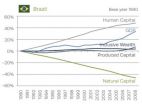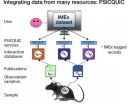(Press-News.org) Genetic variants in a region of the genome linked to our immune response have been linked to increased risk of podoconiosis, a disfiguring and disabling leg swelling caused by an abnormal reaction to the minerals found in soil. An estimated 4 million people worldwide suffer from the condition.
In a study published today in the New England Journal of Medicine, researchers funded by the Wellcome Trust and the Association of Physicians of Great Britain and Ireland compared the genomes of 194 people affected by the disease from southern Ethiopia against 203 people who were unaffected. They identified three genetic variants that increased the risk of developing the condition.
Podoconiosis, or 'podo', as it is often called, was added to the World Health Organization's list of neglected tropical diseases in 2011. It is a type of elephantiasis (leg swelling) found in farming communities in the tropics and is triggered by an abnormal reaction to irritant mineral particles found in soils of volcanic origins amongst people who cannot afford shoes.
Many years of walking, ploughing or playing barefoot on these soils appears to trigger inflammatory changes within the lymph system in the legs, which in time can lead to foot swelling and ultimately elephantiasis.
The disease often runs in families, implying that there is a hereditary component to the disease, but until now, no genetic variants had been identified which confer increased risk. The genetic variants discovered in this new study all fall within a region of the genome known as the HLA class II, which is important in controlling immune responses. Combined, the three variants increase the risk of developing podoconiosis by a factor of two to three.
Prof Melanie Newport from Brighton & Sussex Medical School, who led the study, says: "The region where we have found these susceptibility genes for podoconiosis plays an important role in controlling our immune system. It confirms what we had expected, that there is an immunological basis to the disease. Although this is still early days for identifying potential treatments, it suggests that drugs that target immune responses may be useful."
First author Dr Fasil Tekola Ayele from the Armauer Hansen Research Institute, Ethiopia, adds: "Genome wide association studies on African populations are still fairly novel. However, this study highlights the importance of such studies in helping us understand the origins of diseases that are particularly common on the continent." Dr Ayele is currently on a postdoctoral attachment at the National Human Genome Research Institute, USA.
Dr Abraham Aseffa, also from the Armauer Hansen Research Institute, says: "Our next step is to try to pinpoint exactly which molecules are involved in podoconiosis, and which specific genetic mutations affect the function of these molecules. This will shed a lot more light on potential therapeutic options."
Professor Newport and colleagues have recently launched Footwork, an international initiative to bring together public and private partners to prevent and treat podoconiosis Footwork aims to integrate podoconiosis control with that of other neglected tropical diseases wherever possible, and to partner with organizations working in foot-related conditions to advocate for shoes as cost-effective interventions to tackle such diseases.
"There are still many places round the world where people cannot afford a pair of shoes," says Dr Gail Davey, co-author on the study and Executive Director of Footwork. "For some people, this means cold, cut or bruised feet, but for others it can lead to podoconiosis, which can have a significant impact on their quality of life. We hope that shoes can become the 'new bed-nets': simple, cost-effective interventions that mean that in future there is no reason for anyone's life to be destroyed for the want of a shoe."
Commenting on the findings, Dr Jimmy Whitworth, Head of International Activities at the Wellcome Trust, adds: "Podoconiosis is finally getting the attention it deserves as a disease that blights the lives of millions of people. The success of this international collaboration is testament to the importance of providing opportunities for training and building capacity for African researchers to take a lead on important work such as this."
INFORMATION:
Genome study confirms immune system link to disfiguring leg swelling
2012-03-29
ELSE PRESS RELEASES FROM THIS DATE:
Dealing With Extra Attention After Breast Augmentation
2012-03-29
If you are a woman who has always felt cursed with small breasts, part of your motivation for getting breast augmentation was likely to get more attention from men. But how do you respond if you suddenly suffer from literally an embarrassment of riches?
Ignore Random Catcalls--You will likely get a loft of random male attention on the street. This is annoying, but a fact of life for any pretty girl, and likely you were not a complete stranger to it before. Any time men get together, they are always looking for diversion in the form of an attractive woman, and their catcalls ...
Neutrons uncover new density waves in fermion liquids
2012-03-29
Scientists working at the Institut Laue-Langevin, one of the world's leading centres for neutron science, have carried out the first investigation of two-dimensional fermion liquids using neutron scattering, and discovered a new type of very short wave-length density wave. The team believe their discovery, published in Nature, will interest researchers looking at electronic systems, since high temperature superconductivity could result from this type of density fluctuations.
Fermi liquids are composed of strongly interacting fermion particles, a group that includes quarks, ...
Beyond GDP: Experts preview 'Inclusive Wealth' index at Planet under Pressure conference
2012-03-29
Brazil and India pay a high price for rapid economic growth, according to experts speaking at a major international meeting in London, Planet Under Pressure.
Between 1990 and 2008, the wealth of these two countries as measured by GDP per capita rose 34% and 120% respectively. But a myopic focus on economic capital is flawed, scientists and economists at the conference argue. Natural capital, the sum of a country's assets, from forests to fossil fuels and minerals, declined 46% in Brazil and 31% in India, according to a new "Inclusive Wealth Indicator" designed to augment ...
NY Castle Doctrine Laws Provide Defense Against Home Intruders
2012-03-29
Similar to Englishmen in the 17th century, most New Yorkers probably consider their home to be their castle -- a refuge from the world. It is human nature to want to protect our "castles" from intruders. Perhaps rather unsurprisingly, this concept has a legal name called the Castle Doctrine. It is not a defined law, but a set of principles that has been adopted as some form of law in most states, including New York.
Castle Doctrine laws allow people to use force, including deadly force if necessary, to protect themselves from intruders into their home, vehicles ...
San Gabriel Law Firm Helps Community In and Out of the Courtroom
2012-03-29
The Law Offices of Scott Warmuth believes in serving the community through dedicated and professional legal services in the areas of personal injury, immigration, and elder abuse. Representing Southern Californians with easily accessible offices in East and West San Gabriel Valley, the multicultural law firm provides flexibility to its clients by offering services in Mandarin Chinese, Cantonese Chinese, Taiwanese Chinese, English, and Spanish. Over the years, the firm has secured favorable settlements in hundreds of cases and have successfully filed hundreds of visa petitions. ...
Exploding dinosaur hypothesis implodes
2012-03-29
The pregnant ichthyosaur female from Holzmaden (Germany) that perished 182 million years ago puzzled researchers for quite some time: The skeleton of the extinct marine reptile is almost immaculately preserved and the fossilized bones of the mother animal lie largely in their anatomical position. The bones of the ichthyosaur embryos, however, are a different story: For the most part, they lie scattered outside the body of the mother. Such peculiar bone arrangements are repeatedly found in ichthyosaur skeletons. According to the broadly accepted scientific doctrine, this ...
Defective Metal-on-Metal Hip Implants Take a Heavy Toll on Patients
2012-03-29
Every year, an estimated 250,000 Americans undergo a procedure to replace a damaged hip joint. The new, man-made joints implanted are meant to last problem-free for 15 years or more; yet, in one of the most endemic medical device fiascos in recent memory, one entire category of hip implants is failing at an incredible rate, causing widespread and devastating health consequences.
An Overview of Metal-on-Metal Hip Replacements
An artificial hip implant consists of two components: a socket, and a ball attached to the top of the femur bone that fits inside the socket. ...
Major networking opportunity
2012-03-29
Like people bustling around busy cities, the thousands of molecules inside our cells are constantly interacting with each other: turning each other on or off, working together, splitting up and networking. Understanding the countless ways in which they do so is a major challenge in biology, but it is fundamental to understanding life. Scientists at the European Molecular Biology Laboratory's European Bioinformatics Institute (EMBL-EBI) and colleagues in the International Molecular Exchange (IMEx) consortium are rising to the challenge by offering researchers a freely available ...
CPIC to Depopulate List of Insured Families
2012-03-29
Some Florida homeowners insured through the Citizens Property Insurance Corporation (CPIC) may receive some surprising offers from private insurance companies in the coming months.
The Citizens Property Insurance Corporation is the insurer of last resort in the state of Florida. It is trying to depopulate its list of insured homeowners by encouraging private insurance companies, known as takeout companies, to take over their policies.
The private insurance companies that qualify as takeout companies must be licensed and approved for Florida operation by the Office ...
Hot on the trail of metabolic diseases and resistance to antibiotics
2012-03-29
ABC transporters are membrane proteins that actively pump a wealth of molecules across the membrane. Over 40 different ABC transporters perform vital functions in humans. Genetic defects in ABC transporters can trigger metabolic diseases such as gout, neonatal diabetes or cystic fibrosis, and certain ABC transporters also cause resistance to a wide range of drugs. In tumor cells, increased amounts of ABC transporters that pump chemotherapeutic substances out of the cell are often produced, thus rendering anticancer drugs ineffective. Analogous mechanisms play a key role ...



